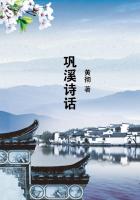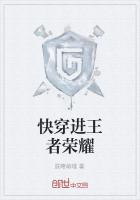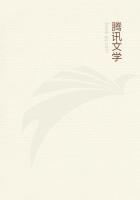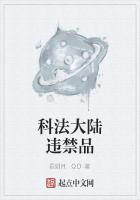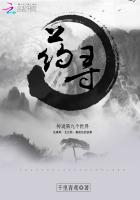[The following passages, from Admiral Fox's report, give his reasons for believing that Samana, or Atwood's Key, is the island where Columbus first touched land. The interest which attaches to this subject at the moment of the centennial, when many voyages will be made by persons following Columbus, induces me to copy Admiral Fox's reasonings in detail. I believe his conclusion to be correct.]
This method of applying Columbus's words in detail to refute each of the alleged tracks, and the study that I gave to the subject in the winter of 1878-79 in the Bahamas, which has been familiar cruising ground to me, has resulted in the selection of Samana or Atwood's Key for the first landing place.
It is a little island 8.8 miles east and west; 1.6 extreme breadth, and averaging 1.2 north and south. It has 8.6 square miles. The east end is in latitude 23 degrees 5' N.; longitude 73degrees 37' west of Greenwich. The reef on which it lies is 15 by 2 1/2 miles.
On the southeast this reef stretches half a mile from the land, on the east four miles, on the west two, along the north shore one-quarter to one-half mile, and on the southwest scarcely one-quarter. Turk is smaller than Samana, and Cat very much larger.
The selection of two so unlike in size show that dimension has not been considered essential in choosing an island for the first landfall.[*]
[*] I am indebted to T. J. McLain, Esq., United States consul at Nassau, for the following information given to him by the captains of this port, who visit Samana or Atwood's Key. The sub-sketch on this chart is substantially correct: Good water is only obtained by sinking wells. The two keys to the east are covered with guano; white boobies hold the larger one, and black boobies the other; neither intermingles.
The island is now uninhabited, but arrow heads and stone hatchets are sometimes found; and in places there are piles of stones supposed to have been made by the aborigines. Most of the growth is scrubby, with a few scattered trees.
The Nassau vessels enter an opening through the reef on the south side of the island and find a very comfortable little harbor with from two to two and a half fathoms of water. From here they send their boats on shore to "strip" guano, and cut satin, dye woods and bark.
When Columbus discovered Guanahani, the journal called it a "little island." After landing he speaks of it as "bien grande,""very large," which some translate, tolerably, or pretty large.
November 20, 1492 (Navarette, first edition, p. 61), the journal refers to Isabella, a larger island than Guanahani, as "little island," and the fifth of January following (p. 125) San Salvador is again called "little island."The Bahamas have an area of about 37,000 square miles, six per cent of which may be land, enumerated as 36 islands, 687 keys, and 2,414 rocks. The submarine bank upon which these rest underlies Florida also. But this peninsula is wave-formed upon living corals, whose growth and gradual stretch toward the south has been made known by Agassiz.
I had an unsuccessful search for a similar story of the Bahamas, to learn whether there were any probable changes within so recent a period as four hundred years.
The common mind can see that all the rock there is coral, none of which is in position. The surface, the caves, the chinks, and the numerous pot-holes are compact limestone, often quite crystalline, while beneath it is oolitic, either friable or hard enough to be used for buildings. The hills are sand-blown, not upheaved. On a majority of the maps of the sixteenth century there were islands on Mouchoir, and on Silver Banks, where now are rocks "awash;" and the Dutch and the Severn Shoals, which lay to the east, have disappeared.
It is difficult to resist the impression that the shoal banks, and the reefs of the Bahamas, were formerly covered with land;and that for a geological age waste has been going on, and, perhaps, subsidence. The coral polyp seems to be doing only desultory work, and that mostly on the northeast or Atlantic side of the islands; everywhere else it has abandoned the field to the erosive action of the waves.
Columbus said that Guanahani had abundance of water and a very large lagoon in the middle of it. He used the word laguna--lagoon, not lago--lake. His arrival in the Bahamas was at the height of the rainy season. Governor Rawson's Report on the Bahamas, 1864, page 92, Appendix 4, gives the annual rainfall at Nassau for ten years, 1855--'64, as sixty-four inches. From May 1, to November 1 is the wet season, during which 44.7 inches fall; the other six months 19.3 only. The most is in October, 8.5inches.
Andros, the largest island, 1,600 square miles, is the only one that has a stream of water. The subdivision of the land into so many islands and keys, the absence of mountains, the showery characteristic of the rainfall, the porosity of the rock, and the great heat reflected from the white coral, are the chief causes for the want of running water. During the rainy season the "abundance of water" collects in the low places, making ponds and lagoons, that afterward are soaked up by the rock and evaporated by the sun.
Turk and Watling have lagoons of a more permanent condition, because they are maintained from the ocean by permeation. The lagoon which Columbus found at Guanahani had certainly undrinkable water, or he would have gotten some for his vessels, instead of putting it off until he reached the third island.
There is nothing in the journal to indicate that the lagoon at Guanahani was aught but the flooding of the low grounds by excessive rains; and even if it was one communicating with the ocean, its absence now may be referred to the effect of those agencies which are working incessantly to reshape the soft structure of the Bahamas.

